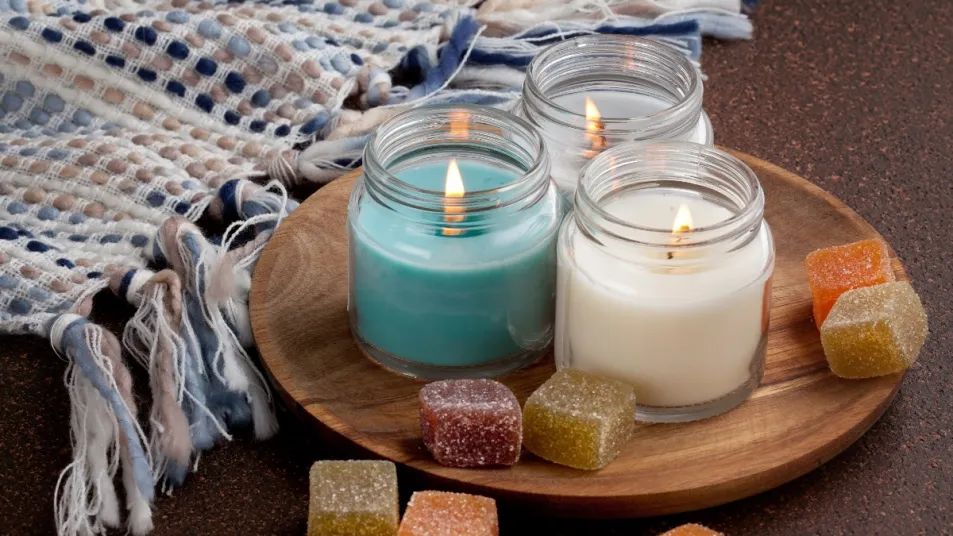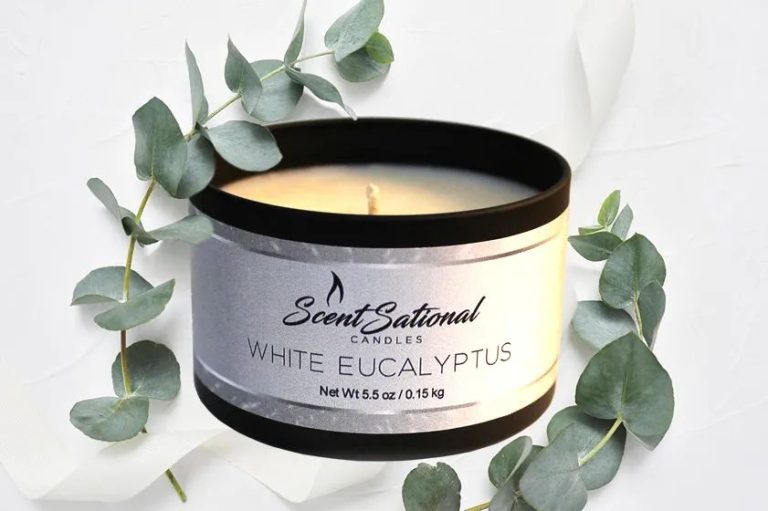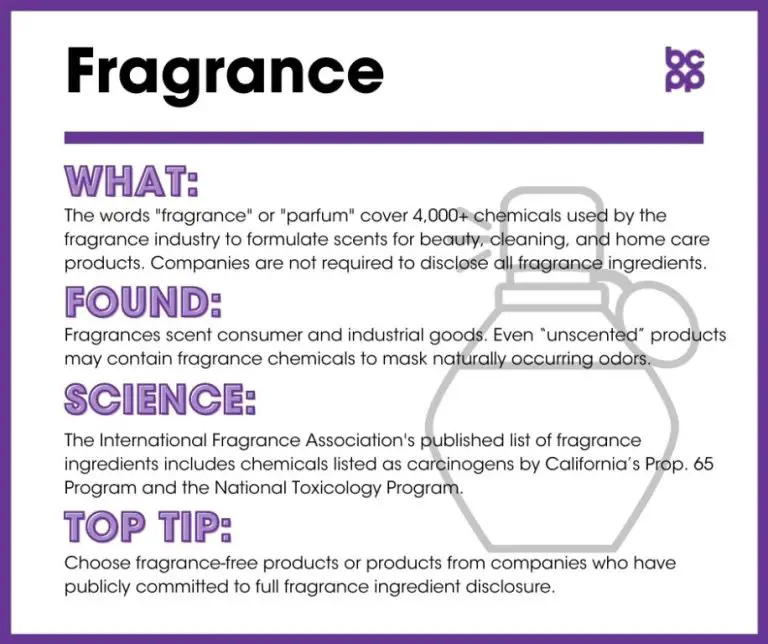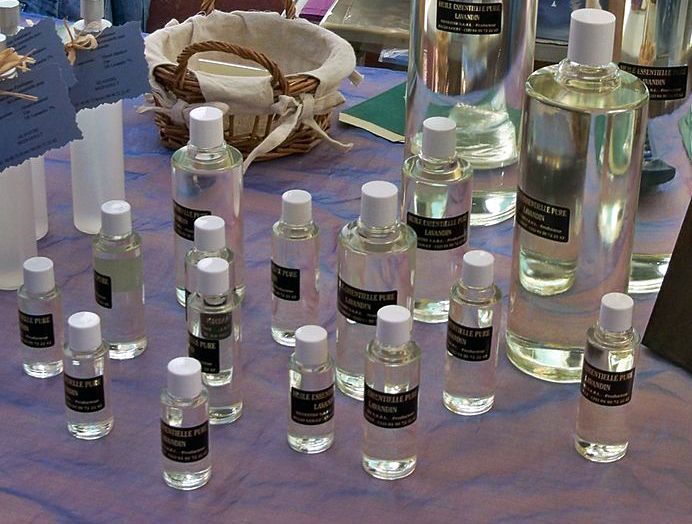Are There Any Non-Toxic Scented Candles?
Scented candles are a popular household item used to create an inviting ambiance and fill a space with pleasing fragrances. However, there has been growing concern in recent years about potential health risks associated with scented candle usage. When burned, scented candles release volatile organic compounds (VOCs) into the air which can be irritating or harmful if inhaled over a long period of time.
Many scented candles are made with paraffin wax derived from petroleum. This type of wax can produce carcinogenic compounds like benzene and toluene when burned (https://www.nytimes.com/2021/11/09/well/scented-candles-health.html). The fragrances added to candles can also contain chemicals like phthalates and formaldehyde that have been linked to health issues. According to research, scented candle usage has been associated with increased risk of asthma, migraine headaches, and respiratory irritation, especially in children (https://www.ncbi.nlm.nih.gov/pmc/articles/PMC9832800/).
While the exposure to chemicals from scented candles is generally quite low, there are concerns for sensitive individuals or with frequent and prolonged usage. This has led to an increased interest in finding non-toxic scented candle options that minimize risks.
What Makes Candles Toxic
Many factors can contribute to making candles toxic. Three of the main concerns are lead wicks, synthetic fragrances, and paraffin wax.
Lead wicks were commonly used in candles until regulations restricted their use. When burned, the lead in these wicks can produce lead dust and fumes that are dangerous if inhaled or ingested, especially for children (1).
Synthetic fragrances are also problematic. These artificial scents contain chemicals like phthalates and volatile organic compounds (VOCs) that can be released into the air when burned. VOCs like benzene and toluene are known carcinogens (2).

Finally, most standard candles are made from paraffin wax derived from petroleum. When paraffin burns, it releases compounds like acetone, benzene, and toluene into the air (3). These can contribute to poor indoor air quality and health issues.
Using safer, natural candle materials can help minimize exposure to toxic chemicals from burning candles.
Health Risks
Burning scented candles, especially ones made with paraffin wax and synthetic fragrances, can pose health risks. The chemicals emitted into the air can cause issues such as respiratory irritation, allergies, and headaches for some people.
According to research published in the National Center for Biotechnology Information, exposure to scented candles significantly increased coughing, wheezing, chest tightness, and other respiratory symptoms in patients with asthma (https://www.ncbi.nlm.nih.gov/pmc/articles/PMC9832800/). Fragrances from candles contain volatile organic compounds (VOCs) that can act as respiratory irritants and trigger asthma attacks.
Synthetic fragrances also commonly contain chemicals like phthalates and formaldehyde that have been linked to allergies and headaches in sensitive individuals, according to the New York Times (https://www.nytimes.com/2021/11/09/well/scented-candles-health.html). However, exposure levels from candle usage in ventilated home environments are generally low.
Safer Wax Alternatives
When it comes to candle wax, there are several safer, non-toxic alternatives to paraffin wax.
Beeswax is one of the most popular natural waxes used in candles. It comes from honeycombs and contains no toxins. Beeswax burns cleaner than paraffin and emits negative ions, which help clean the air. It has a lovely natural honey scent and produces a brighter flame. However, beeswax candles can be more expensive and burn faster than other options.
Soy wax is made from hydrogenated soybean oil. It’s biodegradable, renewable, and burns cleanly. Soy wax doesn’t release toxins and is often blended with natural fragrances and essential oils. It has a lower melting point than paraffin, so soy candles must be burned in containers with stable bases. The drawbacks are soy wax can get brittle in cold weather and have a faint odor.
Coconut wax comes from coconut oil. It’s a sustainable, non-toxic option that burns slowly and doesn’t release harmful chemicals. Coconut wax candles have excellent scent throw and produce minimal soot. The wax can be prone to oil separation, so it’s often blended with other waxes. Coconut wax also tends to be more expensive than soy or beeswax.
Natural Fragrances
When it comes to scented candles, the fragrances used can often contain synthetic chemicals and phthalates that may have negative health effects. To avoid this, opting for natural fragrances derived from plants is a safer choice. Some options for natural fragrances include:
Essential oils like lavender, eucalyptus, lemon, and peppermint extracted from plants through distillation contain the pure aromas and volatile compounds of the plants. They provide pleasant scents without any added chemicals. However, some essential oils may still cause reactions for those with sensitivities.
Dried flowers and herbs like rose, jasmine, chamomile, rosemary, and lavender can be used to naturally scent candles. Mixing different flowers and herbs together also creates unique aromas.
Spices like cinnamon, clove, vanilla, and orange peel also give off nice scents when heated. Blends of spices make tasty fall or holiday candle options.
When looking for natural candle fragrances, reputable suppliers like Brambleberry, Bulk Apothecary, and Crafter’s Choice offer a range of essential oils, botanicals, and spices to scent candles naturally.
Lead-Free Wicks
Lead-free wicks are an important component for creating non-toxic candles. Many traditional candle wicks contain lead cores which can release toxic fumes and particles when burned. Safer alternatives exist using materials like cotton, wood, and zinc.
Cotton wicks are a good lead-free option that burn cleanly without releasing harmful chemicals. According to EricX Light, their organic hemp candle wicks are made from 100% organic hemp and beeswax with little to no soot production.
Wooden wicks also avoid lead and create a pleasant crackling sound when burned. Brands like Arctic Wicks sell coconut and beeswax wicks made from ethically-sourced and non-toxic materials for clean burning candles.
Zinc core wicks are another alternative that resist mushrooming or bending over as the candle burns down. Combined with natural fibers and lead-free materials, they provide performance without releasing toxic substances.
Testing wicks beforehand and choosing non-lead options ensures candles can be safely enjoyed without hazardous emissions.
Top Non-Toxic Brands
When shopping for non-toxic candles, look for brands that use natural waxes, essential oil fragrances, and lead-free wicks. Some top options include:
Yankee Candle – Known for their wide variety of scents, Yankee Candle offers an Eco-friendly candle line made from natural wax and essential oils. Try scents like Lemon Lavender or Sage & Citrus.
WoodWick – These candles contain a patented wooden wick that crackles while burning. WoodWick candles are made with natural waxes and essential oils.
Mrs. Meyer’s Clean Day – In addition to their popular home cleaning products, Mrs. Meyer’s makes non-toxic soy candles scented with essential oils. Basil, Lemon Verbena, and Geranium are popular fragrances.
Making Your Own
If you want complete control over the ingredients, making your own non-toxic candles is easy. The key aspects to focus on are the wax, wicks, fragrances, and jars.
For wax, opt for natural soy, beeswax, or coconut wax rather than paraffin, which can emit toxins when burned (https://www.100daysofrealfood.com/homemade-candles/). Ensure any dyes or scents are non-toxic as well.
Use lead-free, cotton, or wood wicks instead of metal-cored wicks which can leach heavy metals (https://nestingwithgrace.com/easiest-way-to-make-candles-non-toxic/). Natural jute and hemp wicks are good options.
When adding fragrance, try using only pure essential oils, as synthetic fragrances can release VOCs. Blend oils for a custom, natural scent.
Look for non-leeching, BPA-free glass, tin, or stainless steel containers. Avoid plastics and aluminum which may contain phthalates or BPA.
Follow safety precautions, and your homemade candles can provide an affordable non-toxic alternative to store-bought.
Safety Tips
Safely burning candles can significantly reduce fire risk. Here are some key precautions to take (Candles.org, NFPA, FMINS):
- Ensure there is proper ventilation when burning candles. Never burn a candle in an enclosed space.
- Always trim the wick to 1⁄4 inch before lighting to avoid excess smoke and dripping.
- Extinguish candles after 1-2 hours of burn time. Never leave a burning candle unattended.
- Keep candles away from flammable objects like curtains, books, or furniture.
- Place candles in sturdy fire-resistant holders. Avoid tipping over.
- Keep out of reach from children and pets.
Following basic precautions like trimming wicks, avoiding drafts, and never leaving candles unattended can greatly improve safety.
Conclusion
In summary, there are several good options for non-toxic scented candles. Choosing candles made from natural vegetable waxes like soy, beeswax, or coconut wax ensures you avoid potentially harmful petroleum-based paraffin wax. Using essential oils or botanical extracts for fragrance provides a natural alternative to synthetic fragrances which can contain hundreds of untested chemicals. Opting for lead-free cotton or hemp wicks eliminates another source of heavy metal exposure. There are now many reputable brands creating non-toxic candles, but you can also easily make your own safe candles at home.
By being selective about the wax, wicks, and scents used in candles, you can enjoy their ambiance and fragrance without hazardous exposures. It just takes a bit of research to find the healthiest options. With some care and awareness, you can keep your home smelling fresh without risking your health.



